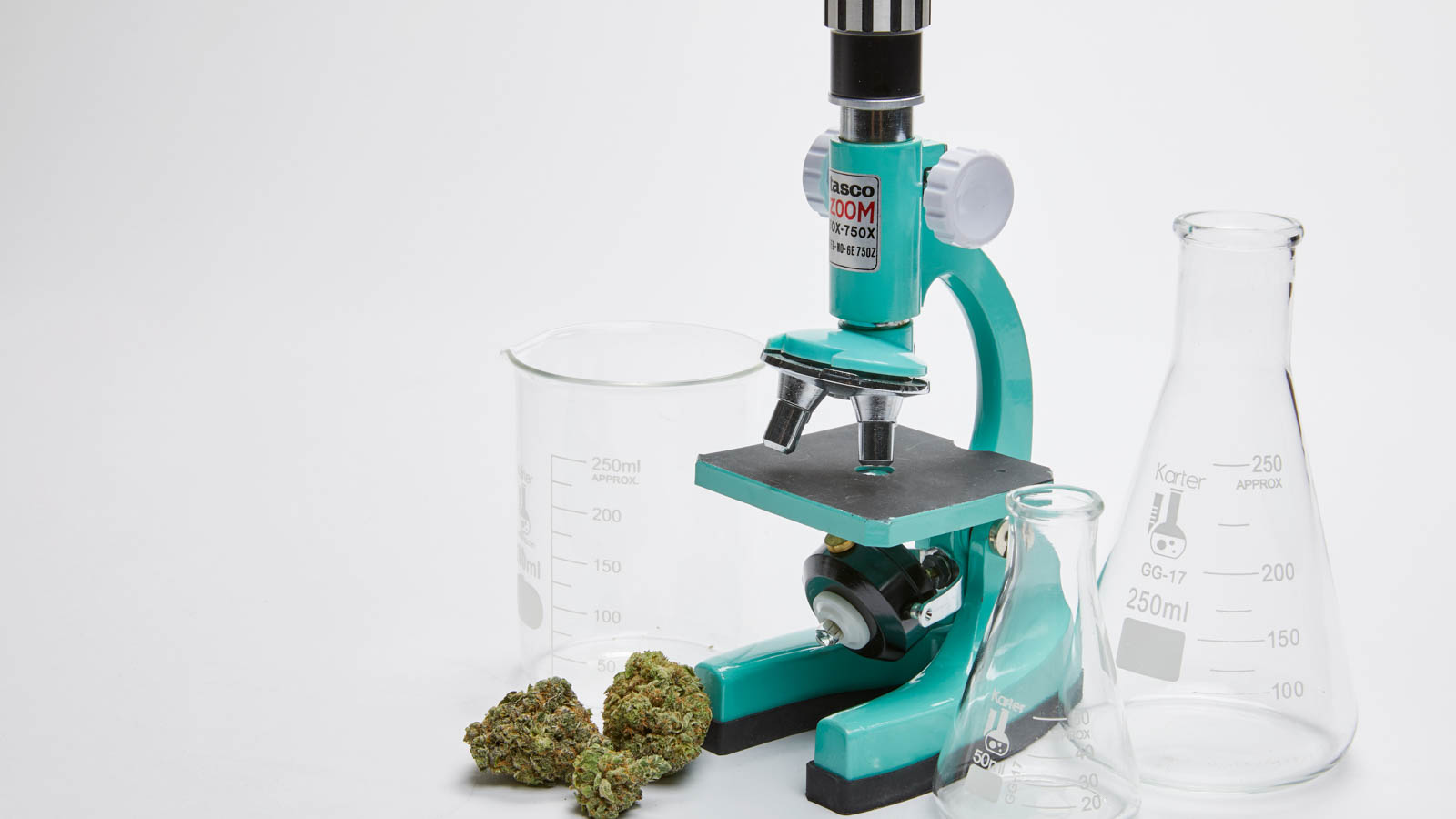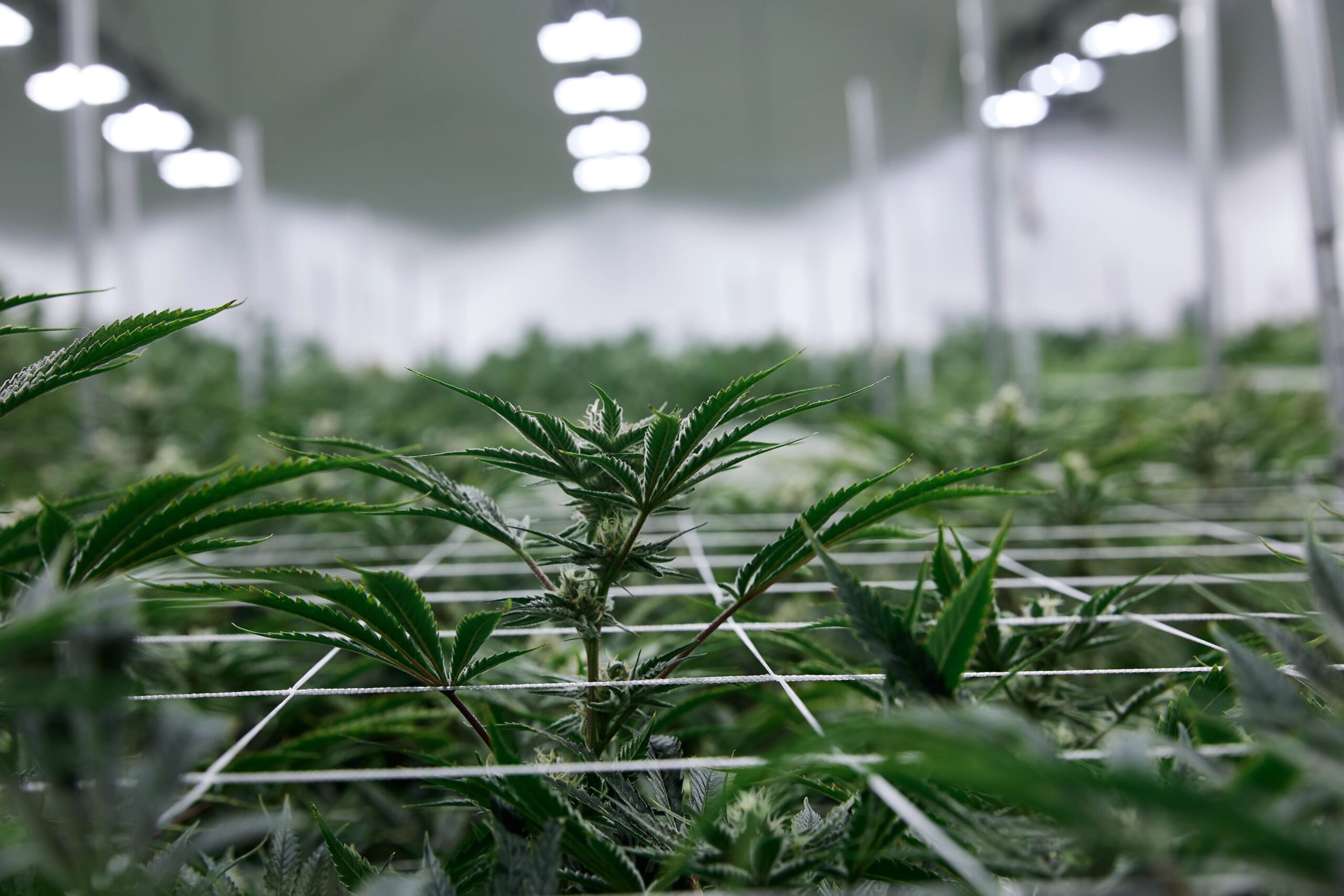While there are countless strains of cannabis on the market, there are only four known types of cannabis plant: the well-known indica, sativa, and hybrid, along with the lesser-known ruderalis. Each plant has its own physical characteristics that make it identifiable to growers. Most notably, the leaf. Learn how to identify each type of cannabis leaf just by looking at them.
What does an indica leaf look like?
Officially named in 1785 by French biologist Jean-Baptiste Lamarck, indica cannabis plants originated in India. They're characterized by their short and stout features and wide leaves with between seven and nine finger-like structures. The indica leaf's short stature makes it a great choice for growing indoors since it won't hit the ceiling.
 Photo by: Gina Coleman/Weedmaps
Photo by: Gina Coleman/WeedmapsImage lightbox

You can spot an indica leaf if you pay close attention to its color, as indicas tend to express a deep shade of green, which signifies a high chlorophyll content. Pure indica strains may include Hindu Kush, Purple Kush, and Afghan Kush, but pure strains of any kind are rare and challenging to find.
What does a sativa leaf look like?
Sativa plants fare better outdoors due to their exceptional height, growing up to 12 feet or more. The slender sativa leaf also has more fingers than the indica leaf, sometimes as many as thirteen. They can take longer to mature and develop skinnier leaves.
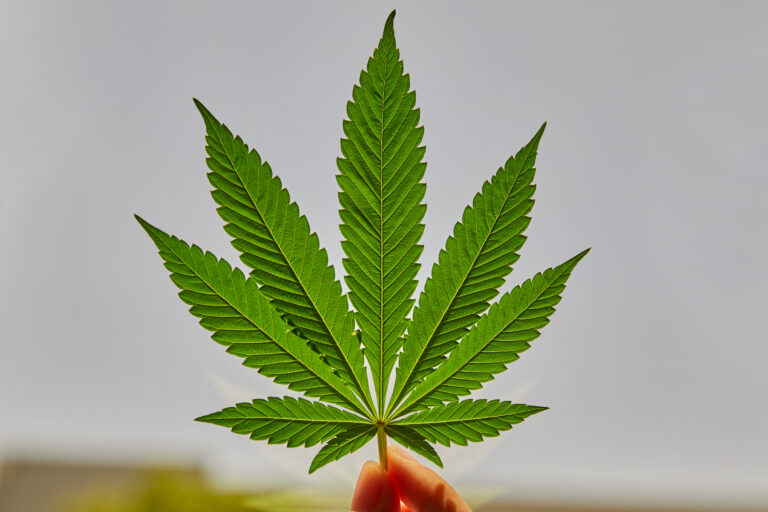 Photo by: Gina Coleman/Weedmaps
Photo by: Gina Coleman/WeedmapsImage lightbox

Besides size and finger differences, you can distinguish between an indica and a sativa leaf by the latter's lighter shade of green. Pure sativa strains may include Jack Herer, Panama Red, and Durban Poison, but connoisseurs debate whether these strains are truly pure or simply sativa-dominant. Jack Herer, for example, may actually be 80% sativa and 20% indica, depending on the plant.
What is a hybrid cannabis leaf?
Finding pure cannabis strains is no easy task these days, and hybrids are ubiquitous. Hybrid leaves tend to be harder to identify, as they may express their parent strains in different ways. Blue Dream, GG4, and Chemdog are some of the many popular hybrid weed strains available today.
What does a ruderalis leaf look like?
Originating in Russia and Central Asia, ruderalis is a separate species of autoflowering cannabis that grows in the wild. It's shorter than sativa and indica plants, sometimes only reaching a foot or two tall. Ruderalis leaves are thin, and each plant only exhibits three to five delicate fingers.
Russian Auto CBD is one of the only known pure ruderalis strains, as most of the other plants that contain its genetics are hybrids.
Why is it important to know the difference between cannabis leaves?
The ability to distinguish between cannabis leaves, particularly the indica and sativa varieties, is a useful tool for both new and seasoned growers. If you know how certain cannabis strains make you feel, you'll want to be sure you're growing the right ones.
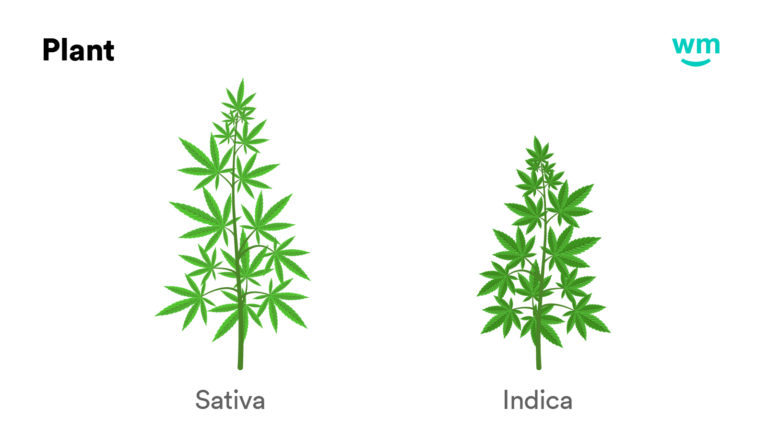 Photo by: Weedmaps
Photo by: WeedmapsImage lightbox

Different strains and cannabis plants also require different levels of care, so it's best to know the exact measures needed to maintain your plants for a successful harvest.
Knowing how to read cannabis leaves can also give cultivators insight into how well—or how poorly—their plants are flourishing. Most deficiencies and problems will show on the leaves pretty quickly, like drooping, tip-curling, leaf spotting, pest damage, or more. Observing leaves during all stages of growth can help you familiarize yourself with what makes a healthy cannabis plant and what constitutes a struggling one, regardless of whether it's a sativa, indica, or hybrid strain.
What's the difference between sugar leaves and fan leaves?
Raw cannabis leaves are versatile and valuable, so be mindful the next time you trim them from your plants and consider saving them for a more sustainable way to use up your cannabis. There are two types of cannabis leaves that you'll encounter on your growing journey.
Sugar leaves
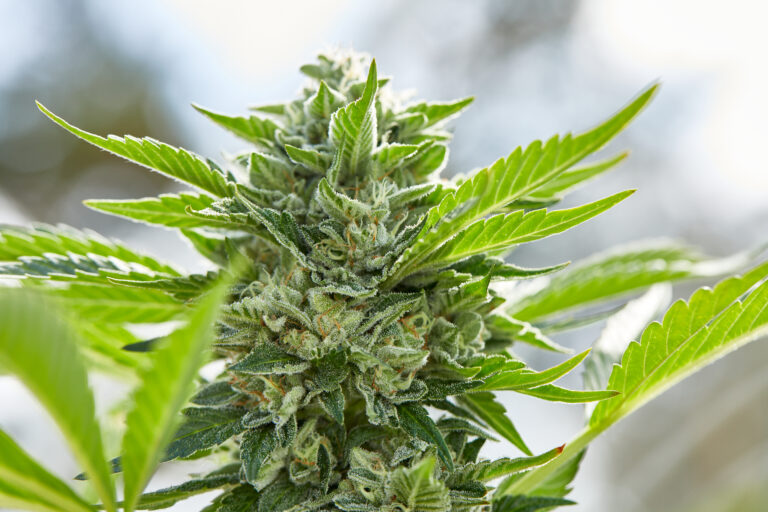 Photo by: Gina Coleman/Weedmaps
Photo by: Gina Coleman/WeedmapsImage lightbox

Coated in white trichomes, sugar leaves are small and grow from the buds. As a rule of thumb, indica strains produce more resin glands which yield a greater amount of trichomes. Therefore, indica strains tend to have more sugar leaves than sativa strains.
Steven Somoza of Hydroponics, Inc., has more than eight years of cannabis cultivation experience. He explained, “As cannabis matures, the bracts or buds of the plant will swell and develop 'sugar' that will grow and fall on surrounding leaves. These sugar leaves are loaded with cannabinoids and are still useful when trimmed off during or after harvest.”
Fan leaves
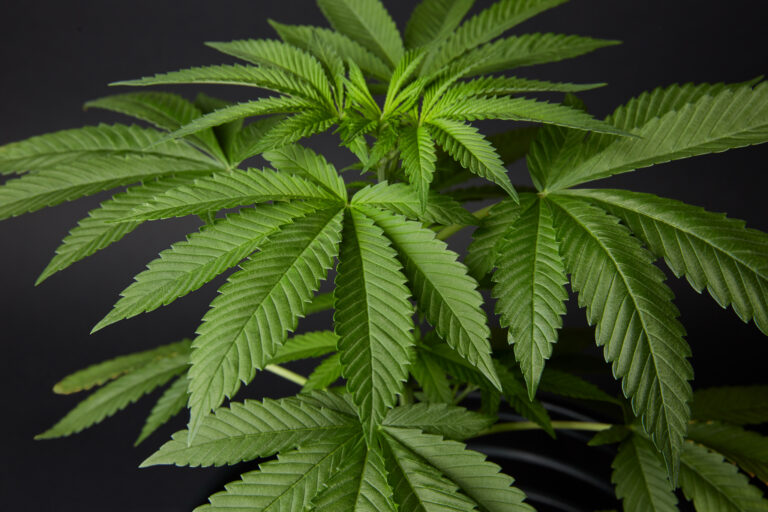 Photo by: Gina Coleman/Weedmaps
Photo by: Gina Coleman/WeedmapsImage lightbox

Bearing a smaller amount of trichomes, these larger and broader leaves are easily seen protruding from all over the cannabis plant. Like sugar leaves, fan leaves are useful and can be used to make healthy composts or compost teas that will go right back into your garden.
What can I do with cannabis leaves?
Both sugar leaves and fan leaves have an array of uses and benefits in the kitchen and in self-care routines.
Here are a few things you can do with your extra cannabis fan and sugar leaves:
- Juice the raw leaves of your cannabis and add it to your smoothies for a healthy boost.
- Whip up some cannabutter or infused coconut oil. Sugar leaves make a great base for cannabis leaf butter or oil which you can then use for all kinds of homemade edibles and topicals.
- Chopping and tossing a few cannabis leaves into a romaine salad with your favorite superfood fixings can add a complex note to your greens.
- Brew a potent cup of cannabis leaf tea and squeeze in some fresh lemon juice for an immunity boost.
- Compost any leftover cannabis leaves to ensure that not one part of the plant goes to waste.
Health benefits of cannabis leaves
Besides adding a flavorful twist to your recipes, cannabis leaves carry many potential health benefits. Cannabis is a plant and, as such, contains essential nutrients and antioxidant properties as any other leafy green would. Raw cannabis boasts heart-healthy "good fats" in the form of omega-3 and omega-6 fatty acids.
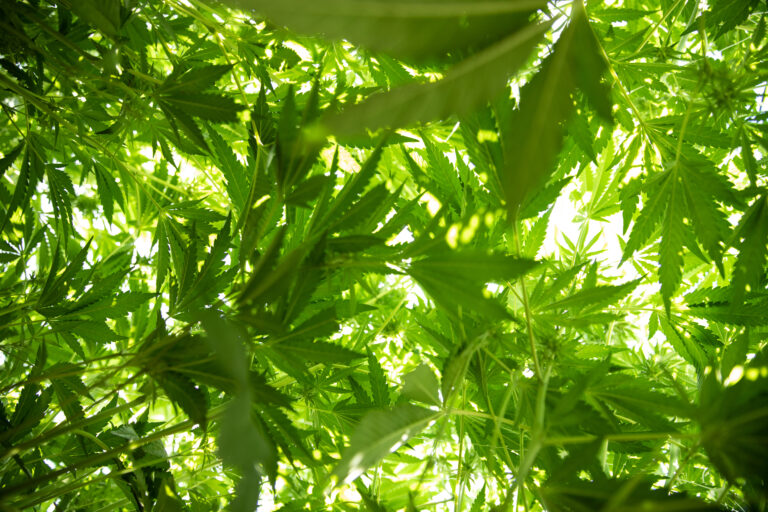 Photo by: Gina Coleman/Weedmaps
Photo by: Gina Coleman/WeedmapsImage lightbox

You may incorporate omega-rich avocado or salmon into your diet to derive skin benefits, but raw cannabis leaves can offer some of the same perks and a blast of phytonutrients. If you need more fiber in your diet, raw cannabis leaves are also excellent sources and can aid with digestive issues, including constipation.
Further, cannabis fan leaves and sugar leaves are abundant in aromatic terpenes that may have antibacterial, antiviral, and even anti-tumor properties. Whether your cannabis leaves end up in the compost pile to nourish the earth or in your body to nourish you, they can be nutritional powerhouses.
Featured image by Gina Coleman/Weedmaps



